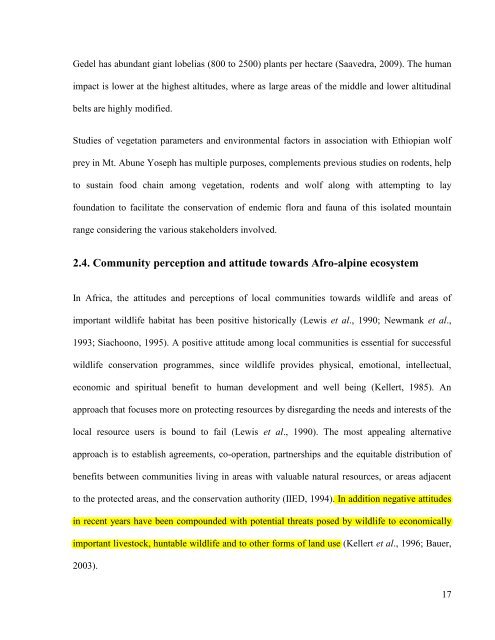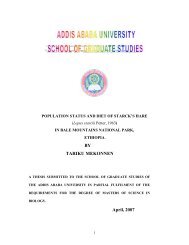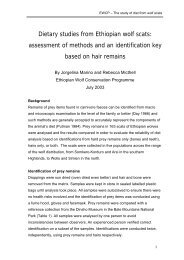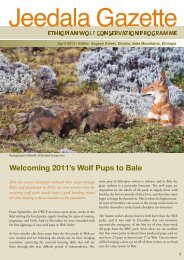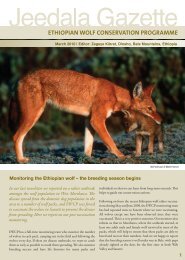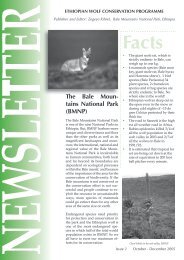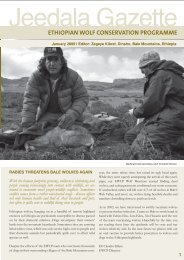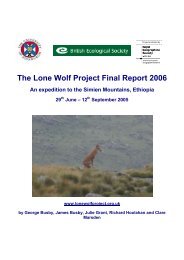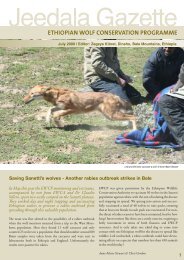Girma-Eshete-Jenbere-thesis - Ethiopian Wolf Conservation ...
Girma-Eshete-Jenbere-thesis - Ethiopian Wolf Conservation ...
Girma-Eshete-Jenbere-thesis - Ethiopian Wolf Conservation ...
You also want an ePaper? Increase the reach of your titles
YUMPU automatically turns print PDFs into web optimized ePapers that Google loves.
Gedel has abundant giant lobelias (800 to 2500) plants per hectare (Saavedra, 2009). The human<br />
impact is lower at the highest altitudes, where as large areas of the middle and lower altitudinal<br />
belts are highly modified.<br />
Studies of vegetation parameters and environmental factors in association with <strong>Ethiopian</strong> wolf<br />
prey in Mt. Abune Yoseph has multiple purposes, complements previous studies on rodents, help<br />
to sustain food chain among vegetation, rodents and wolf along with attempting to lay<br />
foundation to facilitate the conservation of endemic flora and fauna of this isolated mountain<br />
range considering the various stakeholders involved.<br />
2.4. Community perception and attitude towards Afro-alpine ecosystem<br />
In Africa, the attitudes and perceptions of local communities towards wildlife and areas of<br />
important wildlife habitat has been positive historically (Lewis et al., 1990; Newmank et al.,<br />
1993; Siachoono, 1995). A positive attitude among local communities is essential for successful<br />
wildlife conservation programmes, since wildlife provides physical, emotional, intellectual,<br />
economic and spiritual benefit to human development and well being (Kellert, 1985). An<br />
approach that focuses more on protecting resources by disregarding the needs and interests of the<br />
local resource users is bound to fail (Lewis et al., 1990). The most appealing alternative<br />
approach is to establish agreements, co-operation, partnerships and the equitable distribution of<br />
benefits between communities living in areas with valuable natural resources, or areas adjacent<br />
to the protected areas, and the conservation authority (IIED, 1994). In addition negative attitudes<br />
in recent years have been compounded with potential threats posed by wildlife to economically<br />
important livestock, huntable wildlife and to other forms of land use (Kellert et al., 1996; Bauer,<br />
2003).<br />
17


